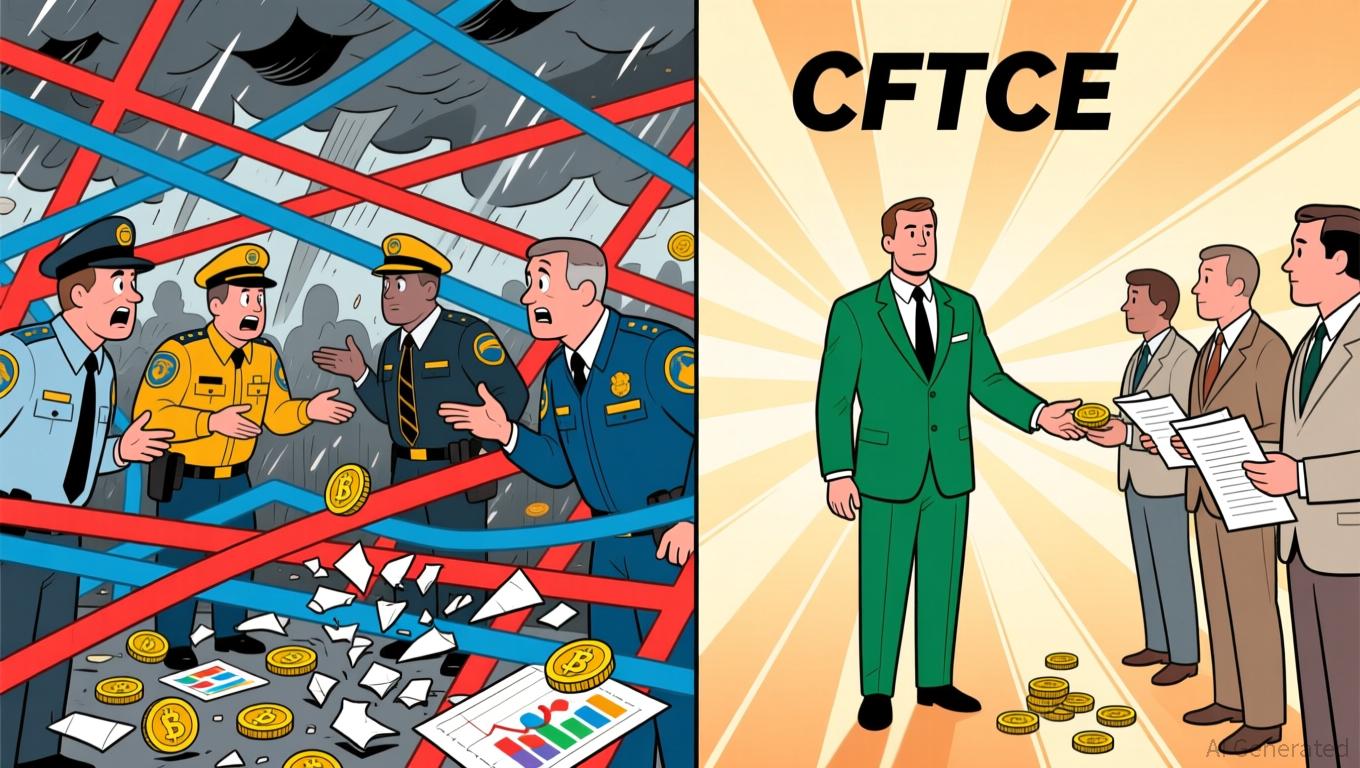Astar 2.0's Strategic Enhancement and Market Impact: Advancements in Blockchain Infrastructure and the Changing Landscape of DeFi
- Astar 2.0 redefines DeFi by addressing scalability, interoperability, and security through infrastructure upgrades like zkEVM and cross-chain protocols. - Strategic partnerships with Japanese web2 giants and innovations like dApp Staking v3 enhance real-world utility and community-driven governance. - By bridging Polkadot , Ethereum , and BSC ecosystems, Astar positions itself as a cross-chain hub, outperforming traditional DeFi's fragmented models. - Emphasis on security and compliance aligns with indus
Strategic Upgrades: The Technical Backbone of Astar 2.0
The progression of Astar Network from 2023 through 2025 has featured a range of targeted improvements aimed at boosting both scalability and interoperability. The 2024 debut of the Astar zkEVM mainnet brought a zero-knowledge
Additionally, the rollout of Astar’s dApp Staking v3 in 2024 introduced a new approach to tokenomics, fostering a more flexible staking environment. This system incentivizes users not just for providing liquidity but also for engaging in governance, aligning the interests of developers, validators, and users, as described in
Looking forward, Astar Evolution v1.5 sets out the 2025 roadmap, emphasizing Coretime on Polkadot—a method to better allocate resources—and Async Backing, which is designed to enhance transaction finality and network flexibility, as detailed in

Infrastructure Breakthroughs: Comparing Astar 2.0 and Conventional DeFi
While early DeFi models brought significant change, they often function within isolated blockchain environments. These frameworks face ongoing issues with scalability and interoperability, which restrict their capacity to efficiently manage complex financial activities, as discussed in
Astar 2.0’s decentralized structure also boosts transparency and lowers systemic risks. Unlike legacy finance, where centralized bodies dictate rules and access, Astar’s on-chain governance lets the community decide on important matters, as described in
Security is another area where Astar 2.0 aligns with industry priorities. Recent incidents in DeFi, such as the $116 million
Market Impact: Astar 2.0’s Distinct Advantages
The targeted improvements in Astar 2.0 give it a strong chance to outpace conventional DeFi in several important aspects. Its cross-chain capabilities reduce barriers in multi-chain transactions, a key benefit as DeFi expands beyond the Ethereum ecosystem. Additionally, partnerships with established web2 companies demonstrate a practical approach to broader adoption, connecting decentralized and traditional finance.
The evolving DeFi market in 2025 is likely to favor platforms like Astar. As regulatory demands increase, protocols that emphasize security and compliance—such as Astar’s on-chain governance and Coretime enhancements—are expected to draw more institutional attention, as outlined in
Nonetheless, obstacles persist. The latest DeFi breaches reveal the vulnerability of even advanced protocols. Astar’s long-term success will rely on its capacity to balance innovation with effective risk controls, ensuring its infrastructure can endure both technical and regulatory challenges.
Conclusion
Astar 2.0 signals a new chapter in blockchain progress, utilizing strategic enhancements in scalability, interoperability, and governance to overcome the weaknesses of earlier DeFi models. By incorporating technologies like zkEVM and
Disclaimer: The content of this article solely reflects the author's opinion and does not represent the platform in any capacity. This article is not intended to serve as a reference for making investment decisions.
You may also like
Bitcoin News Update: Trump's Pause on China Tariffs Triggers Worker Protests Over Future of U.S. Shipyards
- Trump administration suspends China tariffs on shipbuilding imports, drawing labor union criticism over domestic industry risks and worker refunds. - 175 H-1B visa abuse investigations reveal $15M+ potential refunds, as unions warn of wage suppression and corporate favoritism in trade policies. - Square enables Bitcoin payments for 4M U.S. merchants, advancing crypto adoption while Trump dismisses inflation concerns and vows meatpacking crackdowns.

Bipartisan Legislation Assigns Crypto Regulation to CFTC to Clarify Oversight Uncertainty
- U.S. lawmakers propose shifting crypto regulation from SEC to CFTC via a bipartisan bill, reclassifying most digital assets as commodities. - The draft aims to resolve regulatory ambiguity stifling innovation, building on stalled House CLARITY Act efforts during the 38-day government shutdown. - Market optimism surged as shutdown relief pushed Bitcoin above $105k, with ETF outflows persisting amid anticipation of clearer CFTC-led oversight. - Critics warn of CFTC resource constraints, while proponents hi

Solana News Update: DevvStream Invests in SOL Despite $11.8M Deficit, Shows Strong Confidence in Sustainable Blockchain Prospects
- DevvStream Corp. (DEVS) disclosed holding 12,185 SOL and 22.229 BTC, staking SOL for 6.29% annualized yield amid a $11.8M fiscal 2025 loss. - The company launched a digital asset treasury via BitGo/FRNT Financial, securing $10M liquidity from a $300M convertible note facility. - Plans include a 2026 tokenization platform for carbon credits and Solana staking, aligning with its de-SPAC/Nasdaq listing strategy. - Despite crypto market outflows, DevvStream's staked SOL attracted inflows, contrasting broader
ALGO Falls by 2.28% Over 24 Hours as Short- and Long-Term Performance Shows Mixed Results
- ALGO dropped 2.28% in 24 hours to $0.1844, contrasting with 17.29% weekly and 4% monthly gains but a 44.84% annual decline. - Traders monitor ALGO's resilience amid macroeconomic shifts, though long-term bearish trends highlight structural challenges. - Key support at $0.18 could trigger bullish momentum if held, while breakdown risks further declines toward $0.15. - A backtest analyzing 15% single-day spikes aims to assess ALGO's potential for sustained gains or pullbacks post-rallies.